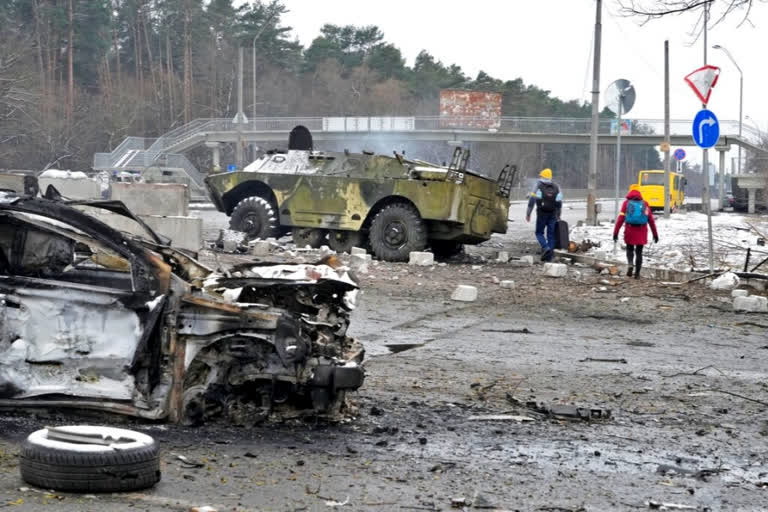New Delhi: In India’s Monday noon advisory meant for all Indians living in Kyiv to leave the city by whatever means available, lay an ominous signal that the ‘siege of Kyiv’ is set to begin, marking the second phase of the ongoing Russia-Ukraine war.
If so, this will be the second time that the ‘siege of Kyiv’ will make it to the pages of history. The first siege—known to be the biggest encirclement in the history of warfare—was during Operation Barbarossa, the German invasion of the Soviet Union during the Second World War—when the Germans encircled trapped Soviet soldiers in Kyiv from August 7-September 26, 1941. More than 700,000 Russian soldiers had died—making it among the most devastating incidents in Russian military history.
On Tuesday, the Ukrainian military suffered the biggest loss of lives in a single strike when at least 70 soldiers died in a Russian Iskander ballistic missile strike in the city of Okhtyrka in eastern Ukraine. At least 11 civilians were also killed in another missile strike on the government headquarters in Kharkiv, Ukraine’s second-biggest city.
Also read: 70 Ukraine soldiers killed as Russian artillery hits Okhtyrka
The first phase of the war saw the pulverization of major military centres and stations of the Ukrainian military leading to a disruption in the organized deployments with major military units cut off from each other. While the initial Russian military advance in Ukraine from the eastern, southern and northern borders were speedy, the forward movement will slow down now as the style of warfare changes to the urban one.
Day sixth onwards of the Russian military campaign in Ukraine that began last Thursday will see significant changes in the Russian war strategy that will change tack from the blitzkrieg strike across the countryside and hinterland as the tactics of the second phase of the Russian war machine unfolds.
This phase will see massive bombardment and strafing of the cities and urban centres by Russian artillery and airstrikes as the first step—like the ones seen in Kharkiv and Okhtyrka—followed by a planned encirclement of the cities which will also see pitched battles street-by-street and house-to-house.
The encirclement effort has been vindicated by reports of a Russian military convoy said to be 64 km (40 miles) long positioned about 25 km away to Kyiv's north. There were also reports of another front set to move in from southern Belarus with President Alexander Lukashenko likely to send in forces to aid the Russians.
The urban siege will be followed by cutting off access to essential services like electricity, water, food and fuel depots amid the unleashing of a propaganda war to demoralize the spirited and unexpected resistance of the civilians who have taken up weapons supplied by the Ukraine military. Ukrainian commanders were quoted saying that more than 80,000 pieces of weapons had been grabbed by civilians—fired with patriotic zeal—eager to face the enemy.
Also read: 40-mile Russian convoy threatens Kyiv; shelling intensifies
With the US-led NATO and other nations promising military and logistics support, the Ukrainian resistance will seek to stagger the war and play for time till the help actually arrives, while the Russians will be keen to see a swift and decisive end to the Volodymyr Zelenskiy-led government at Kyiv with a pliant leadership in place.
Meanwhile, talks between a Russian and a Ukrainian delegation on the Belorus-Ukraine border did not make any gains even as the delegations may return to their respective capitals for consultations for a possible next round of talks. Ukrainian President Zelenskiy also hardened his position with an official request to join the EU.



